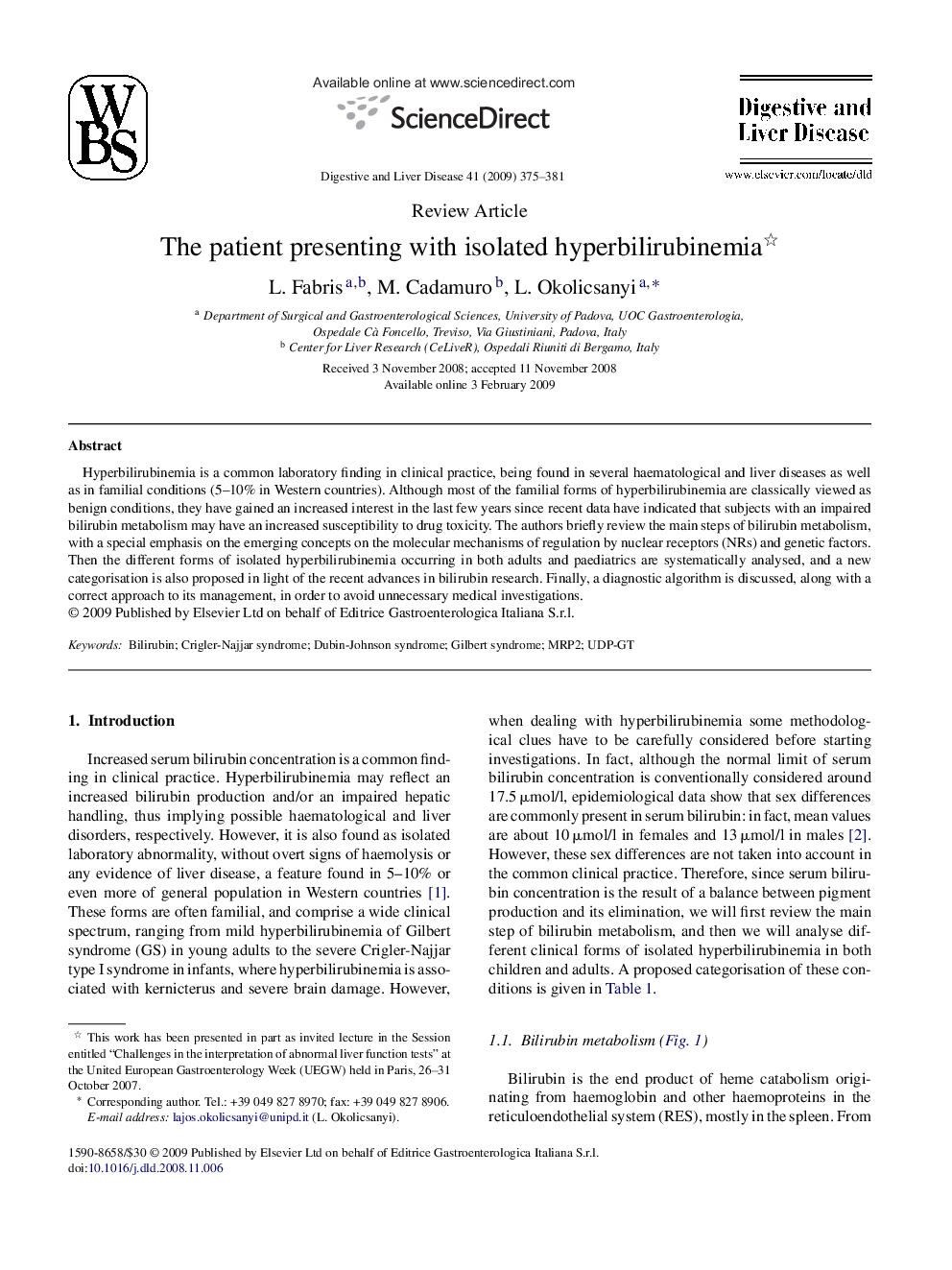| Article ID | Journal | Published Year | Pages | File Type |
|---|---|---|---|---|
| 3264941 | Digestive and Liver Disease | 2009 | 7 Pages |
Hyperbilirubinemia is a common laboratory finding in clinical practice, being found in several haematological and liver diseases as well as in familial conditions (5–10% in Western countries). Although most of the familial forms of hyperbilirubinemia are classically viewed as benign conditions, they have gained an increased interest in the last few years since recent data have indicated that subjects with an impaired bilirubin metabolism may have an increased susceptibility to drug toxicity. The authors briefly review the main steps of bilirubin metabolism, with a special emphasis on the emerging concepts on the molecular mechanisms of regulation by nuclear receptors (NRs) and genetic factors. Then the different forms of isolated hyperbilirubinemia occurring in both adults and paediatrics are systematically analysed, and a new categorisation is also proposed in light of the recent advances in bilirubin research. Finally, a diagnostic algorithm is discussed, along with a correct approach to its management, in order to avoid unnecessary medical investigations.
